| Botanical Name |
|
| Family |
Celastraceae - The Spike-thorn family. |
| Pronunciation |
putt-er-LICK-ee-ah py-ra-KAN-tha |
| Common Name(s) |
English: False Spike-thorn ; Mock Spike-thorn
Afrikaans: Baster-pendoring; Branddoring; Valspendoring; Vuurdoring
IsiXhosa: Intlangwana; Umhlangwe; Umqaqoba
|
| Plant Group |
- Shrub A woody plant of relatively low height, having several stems arising from the base and lacking a single trunk; a bush.
|
| Plant Size |
- Medium to Large
| Tree | 15m to 20m |
| Shrub | 2m to 3m |
| Perennial/ground cover | 60cm to 75cm |
| Bulb | 60cm to 1m |
| Succulent | 60cm to 1m |
|
| Position |
- Canopy Shade Canopy shade is found below closely grown trees where some light filters through. Ideal for the protection of herbaceous plants.
- Light or Dappled Shade Found below trees with sparse, open foliage. Ideal for the protection of herbaceous plants.
- Partial Shade The area is in shade for part of the day and in full sun for part of the day.
- Sun The area is in full sun for all or most of the day, all year round.
|
| General Information |
- Attractive fruits, berries or seeds Brightly coloured fruits or berries increase and extend the visual impact of the plant and are especially attractive to birds and other small wildlife.
- Drought Tolerance: High The plant is well adapted to arid conditions; it can survive long periods of drought and high temperatures without extra water.
- Evergreen Plants that have leaves all year round.
- Frost: Hardy The plant can withstand freezing temperatures or frost without artificial protection.
- Sand tolerant Plants adapted to survive in nutrient poor, very sandy soils.
- Thorns / Spines / Prickles Thorn: A hard, woody, pointed branchlet.
Spine: A modified leaf forming a hard, sharp-pointed outgrowth.
Prickle: A small, sharp-pointed outgrowth growing from the bark of the plant.
- Water Wise Plant species originating from low rainfall regions that require less water to survive and thrive than other plant species.
|
| Specific Information |
Putterlickia pyracantha is a multi-stemmed shrub with arching stems and straight, sharp spines up to 5 cm long. The glossy dark green leaves are often tinged with red or maroon, adding to its possible use as a contrast plant. The fruits are cream, ripening to pink or red. This shrub makes a useful addition to a security hedge and provides safe nesting sites and food for birds.
|
| Ad Break |
|
| Flowers |
| Description |
small (7 mm diameter), with five petals, in loose heads on slender stalks
|
| Season |
- Spring to Summer Plants will seldom bloom for the entire season as given in the list, but should flower during a period within these parameters.
|
| Colour |
|
| Growth Rate |
- Moderate Specifying growth rate can be very misleading as there is considerable variation of growth rate depending on type and species of plant, available water, supplementary feeding, mulching and general care, as well as the plants suitability and adaptability to the garden environment.
|
| Plant Uses |
- Attracts bees, butterflies or other insects This plant attracts insects which can be food for birds or other creatures in your garden.
- Attracts Birds This plant will attract birds.
- Barrier Plant A very thorny shrub, tree or scrambler that can be used to create an impenetrable barrier.
- Boundary A plant useful for planting around the edges of the property to form a green or colourful backdrop, an impenetrable hedge, to hide walls or create privacy.
- Filler Either a fast growing tree or shrub used temporarily to fill in an area while the permanent plants grow to a desired size, or a plant used to fill gaps in borders or beds.
- Hedge Suitable trees or shrubs planted relatively close together so that the branches intertwine to create a barrier. This can be formal – the plants are regularly trimmed to produce a neat shape, or informal – the plants are left to themselves to create a natural hedgerow.
- Suitable for coastal gardens Plants adapted to dry, sandy soil, forceful wind, limited rainfall and intense sunlight.
- Wild Garden An indigenous garden planted for the benefit of wildlife and birds. Provides food, water, a variety of mini-biomes and no poisonous chemicals are used.
|
| Distribution and Habitat |
in the Western Cape and Eastern Cape provinces, along the coast, in scrub, fynbos and dune forest
|
| Planting Suggestions |
Plant in well-drained soil with an application of compost and a good layer of mulch. Further applications of compost and/or organic fertilizer will increase growth and vigour. Regular pruning will keep it in shape if this is desired.
|
| Medicinal Uses |
|
| Ad Break |
|


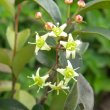
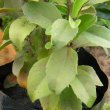
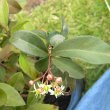
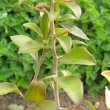
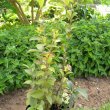


Comments
Putterlickia pyracantha
Hi
I had an enquiry about the edibility of the fruits. I know that birds and other wildlife do eat the fruits, but do you know whether it is edible for human beings?
Regards
Mariana
Fruit edibility of Putterlickia pyracantha
Hi Mariana
I must admit I really don't know, there being no reference to their suitability for human consumption that I could find.
My first thought was why would anyone want to eat them, as despite their luscious appearance, they have almost no flesh and consist almost entirely of a dry woody husk covering the hard seeds.
It then struck me that these fruits could look quite appealing to small children which could be a problem. However, plants with poisonous fruits, leaves, roots etc. are well documented. The very fact that there is no mention of the fruits being edible or not, points to the fact that they are probably not poisonous.
(Please note that I have no medical, scientific or botanical training, studies or reports to verify my above comments and cannot take responsibility for any harm, injury or death resulting from consumption of the fruits of Putterlickia pyracantha.)
Kind regards
Lorraine
Discuss this plant
Share knowledge, ask a question or give an experience.